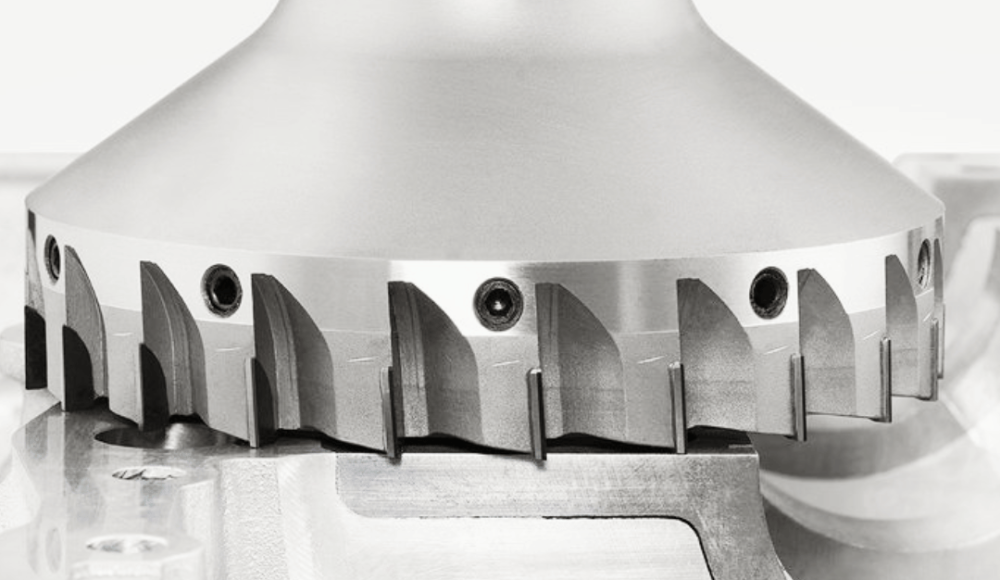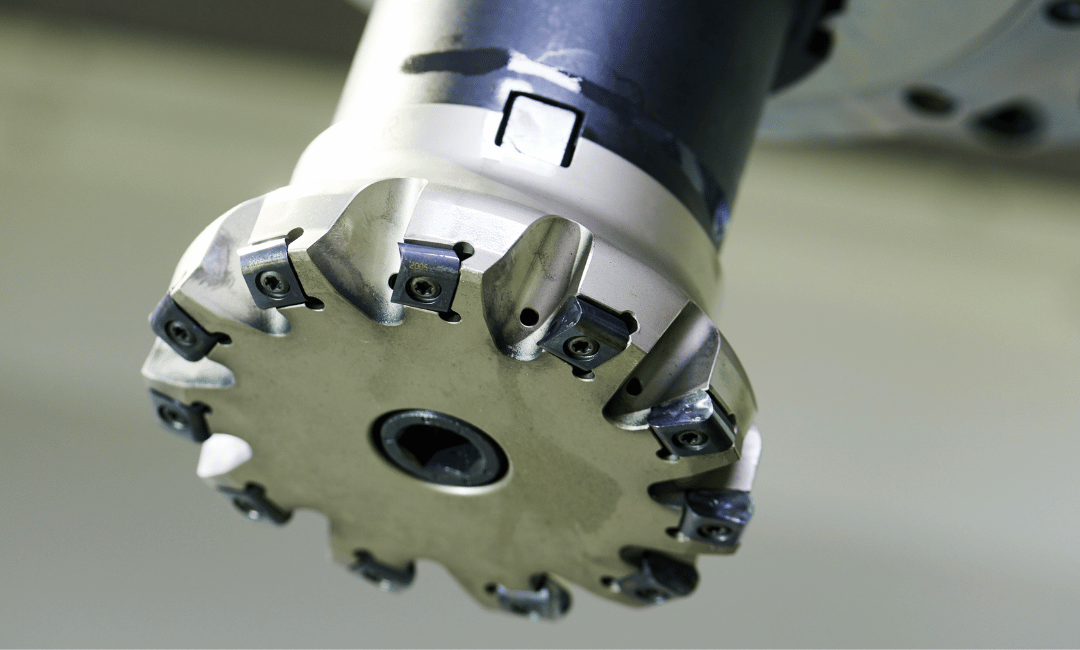دعنا نسير خلال عملية الطحن المثيرة للاهتمام, جزء حاسم من التصنيع الدقيق. سواء كنت من ذوي الخبرة أو شخص جديد في عمليات CNC, يحتوي هذا الدليل على كل ما تحتاجه لفهم هذه الطريقة.
مقدمة: فهم CNC والطحن
التصنيع باستخدام الحاسب الآلي قام بإعادة تشكيل كيفية تصنيع الصناعات المكونات. عن طريق أتمتة العمليات, إنه يضمن الدقة والموثوقية, خاصة بالنسبة للأشكال المعقدة والأجزاء. بين تقنيات الآلات المختلفة, يبرز الطحن على أنه متعدد الاستخدامات للغاية. باستخدام أداة دوارة, إنه يحتفظ بالمواد في مجموعة متنوعة من الأشكال والأحجام.
لكن, عندما تكون هناك حاجة إلى تفاصيل معقدة أو ملفات تعريف فريدة, قد لا يكون الطحن الأساسي كافيًا. هذا هو المكان الذي يتفوق فيه الطحن, تقديم دقة الصياغة لتصميمات مفصلة.
ما هو طحن الشكل?
طحن النموذج هو مقاربة متخصصة للآلات. بدلاً من التخفيضات الأساسية أو المنحنيات الواضحة, يستخدم قواطع مصنوعة مخصصًا لإنشاء أشكال دقيقة. تخيل قاطعًا بتصميم مقعر يشكل حافة محدب - كل شيء يتعلق بمطابقة الأداة مع الملف الشخصي المطلوب.
الصناعات مثل الطيران, السيارات, والرعاية الصحية تعتمد اعتمادًا كبيرًا على هذه التقنية. يتم استخدامه لصياغة التروس, قوالب, شفرات التوربينات, و اكثر. إذا كان المشروع يتطلب الدقة والاتساق, خاصة بالنسبة للتشغيل العالي الحجم, يوفر Form Milling نتائج رائعة.
كيف يتم تصنيع قواطع الطحن
قواطع طحن النماذج هي أدوات دقيقة مصممة لتلبية ملفات تعريف محددة. تم تصميمها من مواد متينة للتعامل مع مطالب الآلات, مثل:
- أداة الصلب: المعروف عن صلابة وموثوقيته.
- كربيد صلب أو ناحز: يوفر صلابة ومقاومة ممتازة للارتداء.
- Polycrystalline Diamond (PCD): مثالي للمواد الصعبة والكاشفة.
- حديدعالى السرعه (الأحرار): خيار مرن مناسب للتطبيقات المتنوعة.
تتضمن عملية التصنيع عادة:
- تشكيل أولي: يبدأ القاطع كشكل تقريبي.
- طحن الملف الشخصي: يتم تحسين الشكل الخشن إلى ملف تعريف دقيق.
- نزح كربيد: تتم إضافة إدراجات من أجل تعزيز المتانة عند الحاجة.
- التفتيش النهائي وصقله: يتم فحص كل أداة بعناية وصقلها للدقة.
- الصيانة وتجديد: يتم تجديد الأدوات البالية من خلال شحذ أو استبدال قطع الغيار, تمديد عمرهم.
مواد متوافقة لطحن النموذج
أعمال الطحن مع مجموعة واسعة من المواد, مما يجعلها قابلة للتكيف بشكل لا يصدق. وتشمل الخيارات الشائعة:
- البلاستيك: خفيفة الوزن ومقاومة للتآكل, هذه تستخدم في تطبيقات متنوعة.
- المركبات: غالبًا ما يتم اختيار المركبات في قطاعات مثل الفضاء والسيارات.
- المعادن: من الألومنيوم إلى التيتانيوم, المعادن هي المواد الغذائية في عمليات الآلات.
هذا التنوع يجعل طحن النموذج مناسبًا لعدد لا يحصى من الصناعات والأغراض.
مزايا طحن النماذج مقارنة بالتقنيات الأخرى
إن قدرة الطحن على إنشاء أشكال معقدة في عملية واحدة تميزها عن طرق أخرى. على عكس الطحن التقليدي, والتي قد تتطلب عدة خطوات وأدوات, تشكل الطحن يبسط العملية, توفير كل من الوقت والموارد. إنه فعال بشكل خاص لإنشاء ميزات متعددة في وقت واحد مع ضمان التشطيبات السطحية عالية الجودة.
فوائد وتحديات طحن النموذج
دعونا نلقي نظرة فاحصة على ما يجعل طحن الطحن فعالًا وحيث قد يشكل تحديات.
الفوائد الرئيسية:
- يتعامل مع الأشكال المعقدة بسهولة: مثالي للملفات التعريف والخطايا التفصيلية.
- دقة عالية: يقدم نتائج موحدة, حتى في الإنتاج الضخم.
- توفير الوقت: يقلل من الحاجة إلى إعدادات متعددة أو تغييرات الأداة.
- فعال من حيث التكلفة للتشغيل الكبير: في حين أن تكاليف الإعداد قد تكون أعلى, المدخرات طويلة الأجل في الإنتاج ذو الحجم الكبير كبير.
التحديات المحتملة:
- عملية الإعداد المطولة: تتطلب الأدوات المخصصة والبرمجة إعدادًا دقيقًا.
- ارتفاع التكاليف الأولية: أكثر ملاءمة للمشاريع واسعة النطاق.
- يتطلب الخبرة: تعد البرمجة المناسبة وإعداد الأدوات ضرورية للنجاح.
كيف يعمل طحن الطحن
تبدأ العملية بمرحلة تصميم واضحة, حيث يقوم المهندسون بإنشاء مخططات مفصلة أو نماذج CAD للشكل المطلوب. بناء على هذه, تم تخصيص القاطع لمطابقة التصميم بدقة.
إليك كيف تتكشف:
- التصميم والتخطيط: تم تصميم الشكل المطلوب رقميًا, ضمان حساب جميع التفاصيل.
- إعداد القاطع: تم تأمين الأداة المخصصة في جهاز CNC, ويتم فحص المحاذاة للدقة.
- الجافة الجافة: يضمن تشغيل الاختبار جميع المعلمات, مثل السرعة ومعدل التغذية, صحيحة.
- عملية القطع: تتفاعل الأداة مع المادة, تشكيله لتلبية المواصفات الدقيقة.
تعتبر الدقة والاهتمام بالتفاصيل خلال هذه العملية ضرورية لتحقيق أفضل النتائج.
أنواع قواطع الطحن النموذجية
تأتي قواطع الطحن في أنواع مختلفة, يخدم كل وظيفة محددة:
- قواطع مقعرة ومحدب: تستخدم لإنشاء ملفات تعريف مستديرة, مثل الأخاديد أو التلال.
- أدوات شكل: مصمم لتلميح محدد, مثل تلك المستخدمة في النظم الهيدروليكية.
- قاطعات التقريب الزاوية: أضف ناعمًا, الحواف المنحنية, تحسين الجماليات والوظائف.
اختيار القاطع الأيمن
يعتمد اختيار قاطع طحن النموذج المناسب على احتياجات المشروع. تشمل العوامل التي يجب مراعاتها:
- توافق المواد: تأكد من أن القاطع مناسب لمادة العمل.
- تعقيد الشكل: غالبًا ما تتطلب التصميمات المعقدة قواطع مخصصة.
- حجم الإنتاج: للتشغيل الأكبر, توفر الأدوات المخصصة كفاءة أفضل وتوفير في التكاليف.
الأفكار النهائية
طحن النموذج هو أداة أساسية في الآلات الحديثة. قدرتها على إنشاء مكونات مفصلة ودقيقة تجعلها لا غنى عنها لمختلف الصناعات. في نفس الوقت, قد يتطلب الإعداد الوقت والموارد, لكن النتائج المتسقة والكفاءة التي يقدمها في الإنتاج على نطاق واسع أكثر من تعويضها. يضمن التعاون مع المهنيين المهرة أفضل النتائج لاحتياجات التصنيع المعقدة.
الأسئلة الشائعة
- هو شكل طحن مناسب للمشاريع الصغيرة?
عادة ما يكون أكثر فعالية من حيث التكلفة للإنتاج ذو الحجم الكبير بسبب الاستثمار المقدم في الأدوات والإعداد. - ما مدى دقة تشكيل طحن?
بدقة للغاية - غالبًا ما تعمل الآلات في ضمن التحمل الصغرى مثل 0.0002 بوصة. - يمكن إعادة استخدام القواطع البالية?
نعم, يمكن إعادة صياغة العديد من القواطع أو استبدال مكوناتها لتمديد عمرها.








1 فكرت في "تشكل الدليل العملي الخاص بك الطحن”